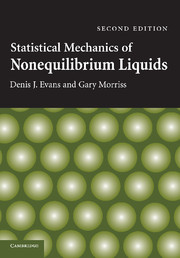Since 1990, when the first edition appeared, there has been a significant advance in the development of nonequilibrium systems. The centerpiece of the first edition was the nonequilibrium molecular-dynamics methods and their theoretical analysis, the connections between linear and nonlinear response theory, and the design of the simulation methods. This is now a mature field with only one significant addition, which is the new method for elongational flows.
Chapter 10 in the first edition was called “Towards a thermodynamics of steady states.” This contained an introduction to deterministic chaotic systems. The second edition has the same title for Chapter 10, but the contents are now completely different. The application of the ideas of modern dynamical-systems theory to nonequilibrium systems has grown enormously with all of Chapter 8 devoted to this. However, this still constitutes the barest of introductions with whole books (Gaspard, 1998; Dorfman, 1999; Ott, 2002; and Sprott, 2003) devoted to this theme. The theoretical advances in this area are some of the biggest. The development of methods to study the time evolution using periodic orbits, and the use of periodic orbits to develop SRB measures for nonequilibrium systems are exciting steps forward.
Based on the dynamical properties, Lyapunov exponents in particular, there have been great strides made in the development of the study of fluctuations in nonequilibrium systems.
